Author: Larry St Aubin
We go from Riding Mountain National Park to Regina, SK. It’s a 4 hour drive across the prairies. But first we take a drive through the Lake Audy Bison Enclosure.
Regina Tourism: “We would like to acknowledge that the land on which we gather is Treaty 4 territory and the traditional territory of the Anihšinābēk, Nêhiyawak, Dakota, Lakota, and Nakota peoples, and the original home of the Métis/Michif Nation. We recognize that both Indigenous and Métis people are the spiritual and cultural keepers of their traditional lands and still to this day, continue to practice their values, languages, beliefs and knowledge.”
Lake Audy Bison Enclosure. Seeing the 40-odd bison at the Lake Audy Bison Enclosure is an activity you can do all year round; there are separate summer and winter enclosures. We get an early start to catch them at breakfast.
Unfortunately, the enclosure was closed when we got there. There was a house but no one around to ask.
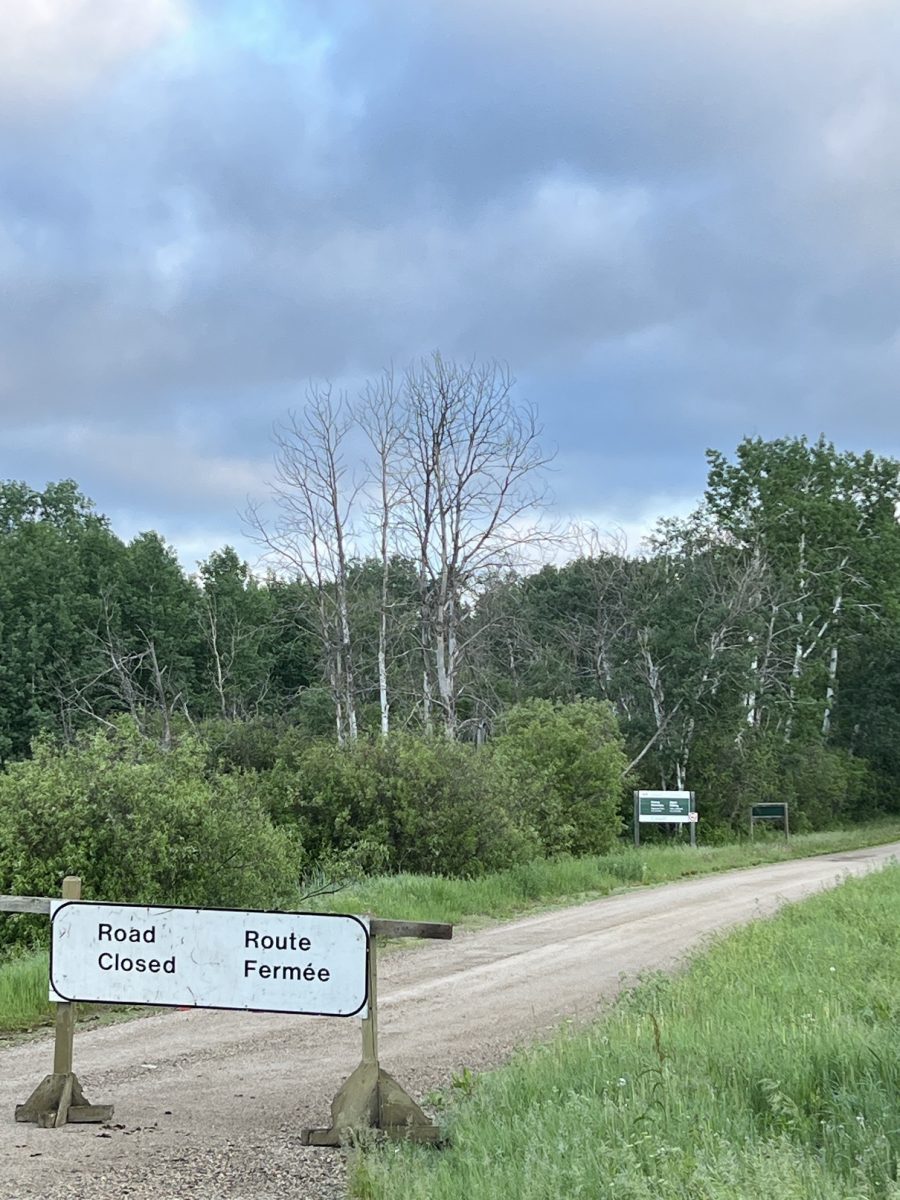
Bison reintroduction was possible because of conservation methods put to work in the early 1900’s. A group of 20 animals from Wainwright, Alberta was re-introduced here in 1931 as a display herd to offer the public the opportunity to view this native creature. A drive over the cattle guards gives a close up view of the herd.
“The Lake Audy plain was chosen because of its healthy prairie ecosystem; and because old bison bones and markings were found in this area, indicating that this was part of their historic range before their extirpation.”
“Unfortunately, disaster stuck this first reintroduced herd. The herd had been infected with bovine Tuberculosis while in Alberta, and thus had to be destroyed. It was replaced with 10 plains bison from Elk Island National Park in the 1940s. The bison that roam the enclosure today are descendants of that small group from Elk Island.”
However, there was a beautiful sunrise on the prairies.
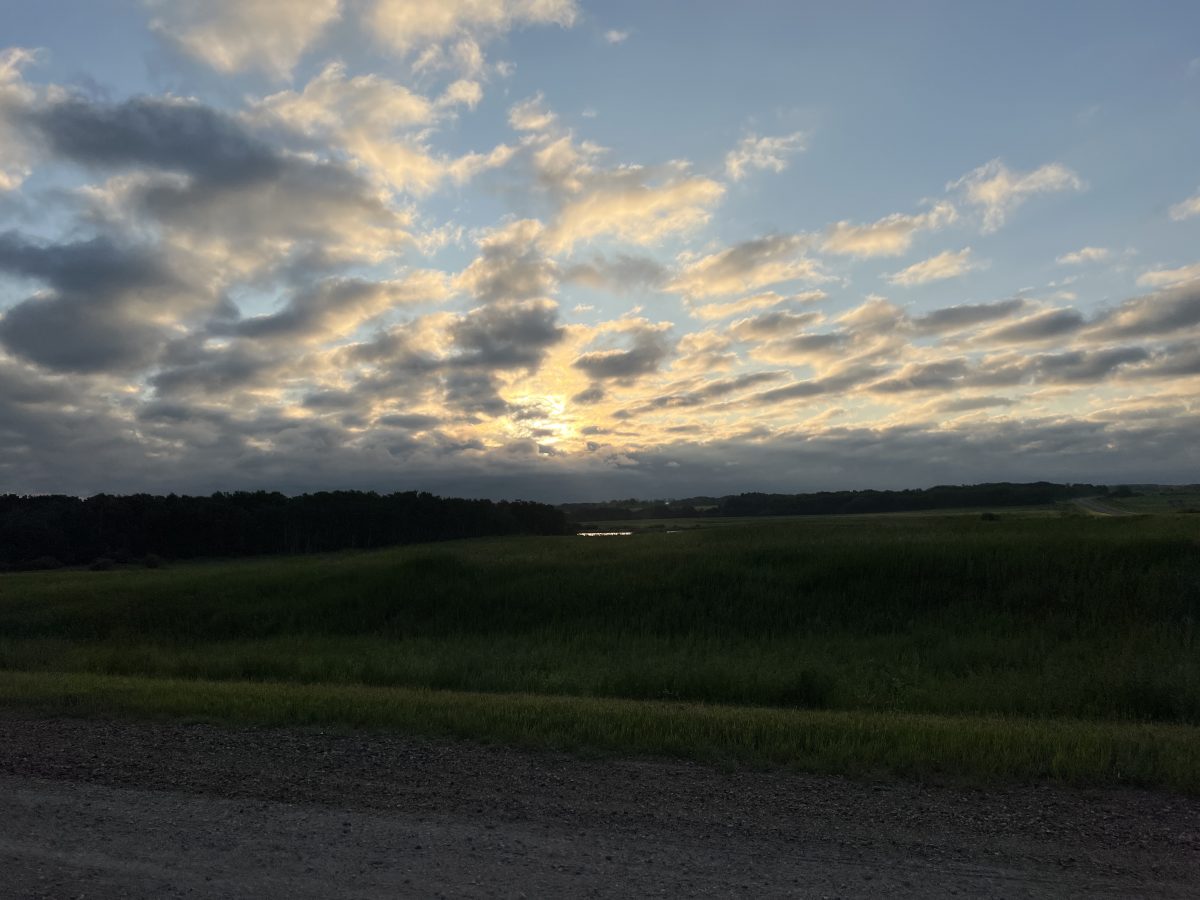
Regina was originally called “Pile-of-Bones” from the Cree “Oskana kâ-asastêki“. It was an area of featureless grassland – no parks or access to water. Although there were more suitable places for the capital, Lieutenant-Governor of the North West Territories Edgar Dewdney, had land holdings in the area.
“Lieutenant-Governor Dewdney had acquired land adjacent to the route of the future CPR line at Pile-of-Bones, which was distinguished only by collections of bison bones near a small spring run-off creek, some few kilometres downstream from its origin in the midst of what are now wheat fields. There was an “obvious conflict of interest” in Dewdney’s choosing the site of Pile-of-Bones as the territorial seat of government and it was a national scandal at the time.” Wikipedia
“Princess Louise, Duchess of Argyll, wife of the then Governor General of Canada, named the new community Regina, in honour of her mother, Queen Victoria.”
First Nations University. “In 1976, we started out as the Saskatchewan Indian Federated College (SIFC) with 10 students. In 2003 we became First Nations University of Canada. Today, we have over 800 full time students, and more than 2000 U of R students take classes with us.”
“We specialize in Indigenous knowledge—and support Indigenous cultures, languages, and values. Our students can learn through ceremony with our Elders, in addition to their classroom experience.”
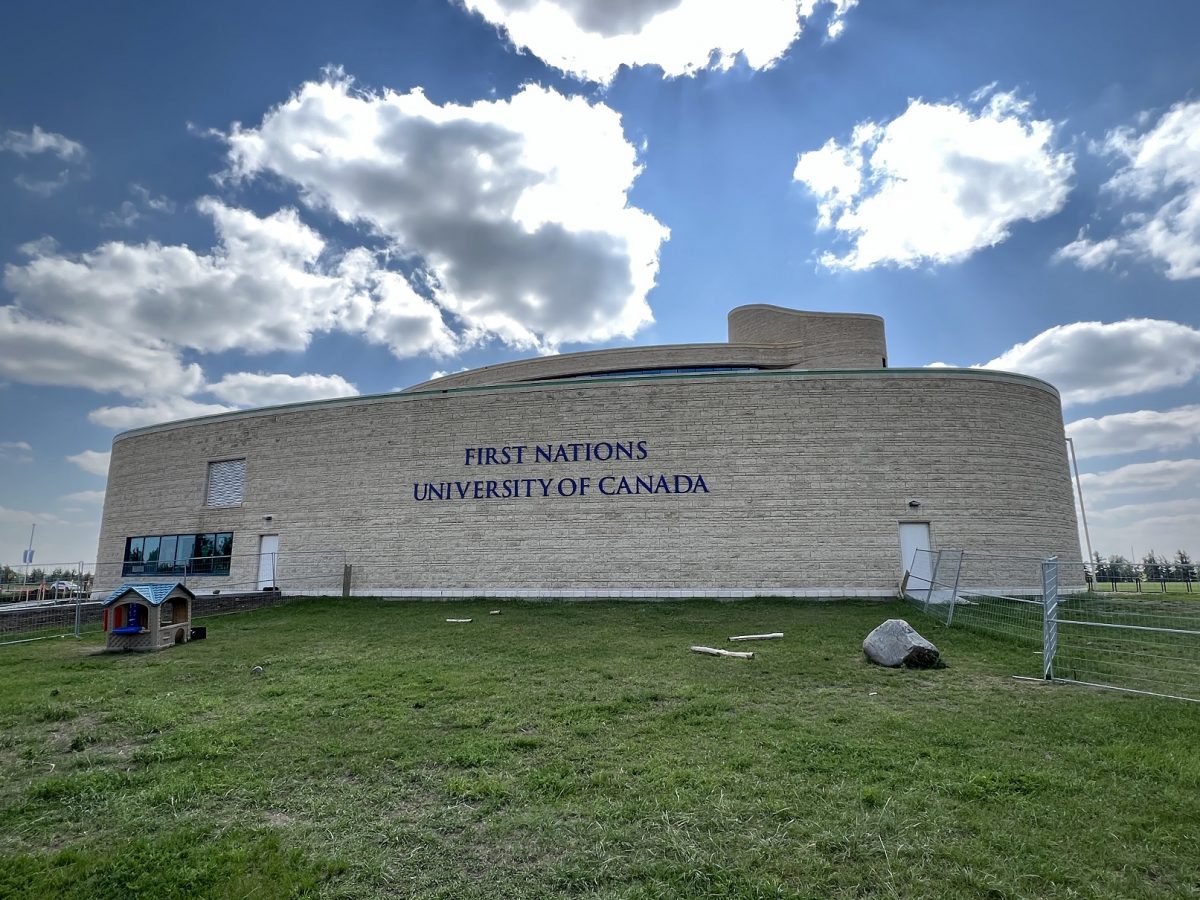
This building was designed by world-renowned Indigenous architect Douglas Cardinal. It resembles another Cardinal building- the Canadian Museum of History in Gatineau, Quebec. It is a semicircle that faces south embracing the light and warmth of the sun.
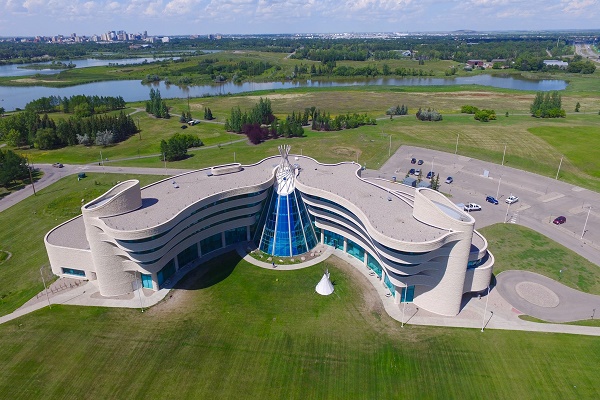
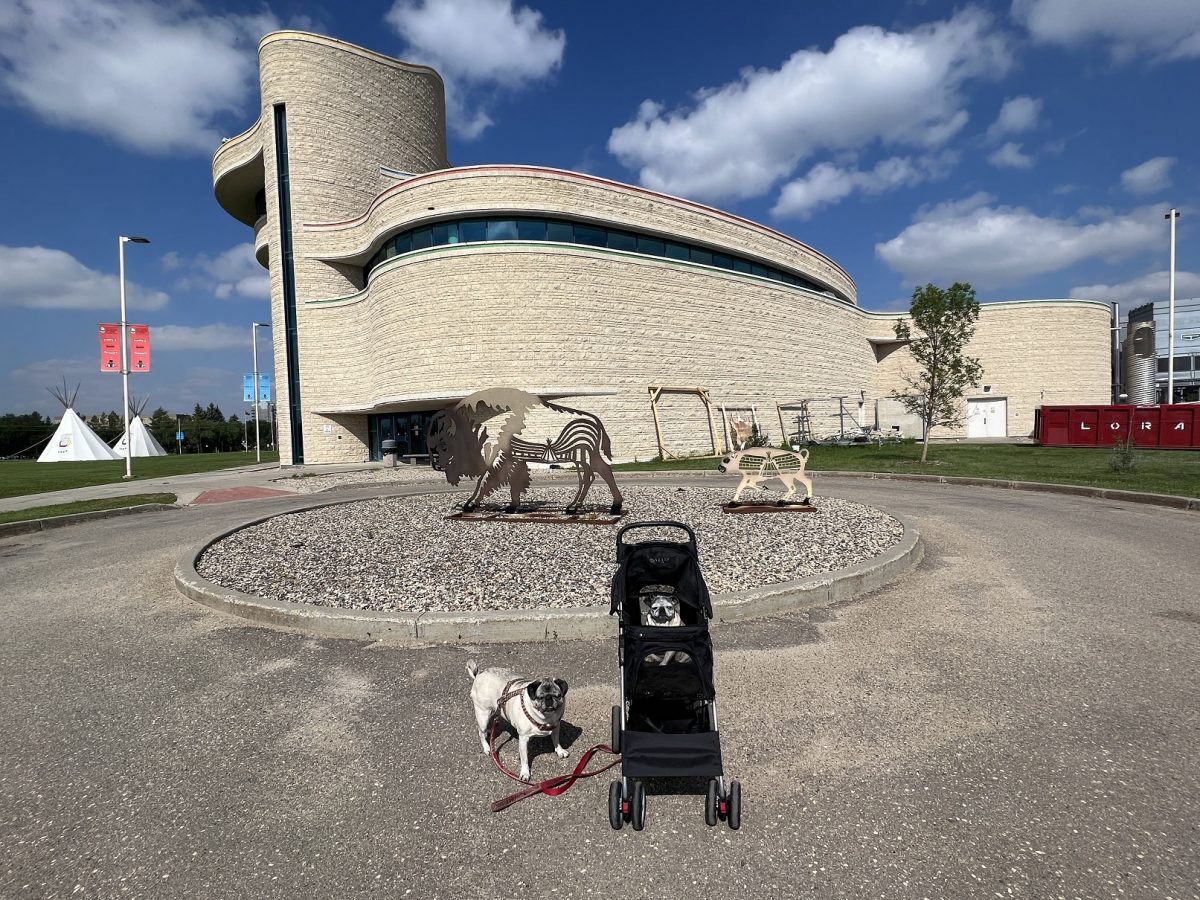
Each level of the building juts out further than the last. This maximizes sun in the winter and shade in the summer, saving energy.
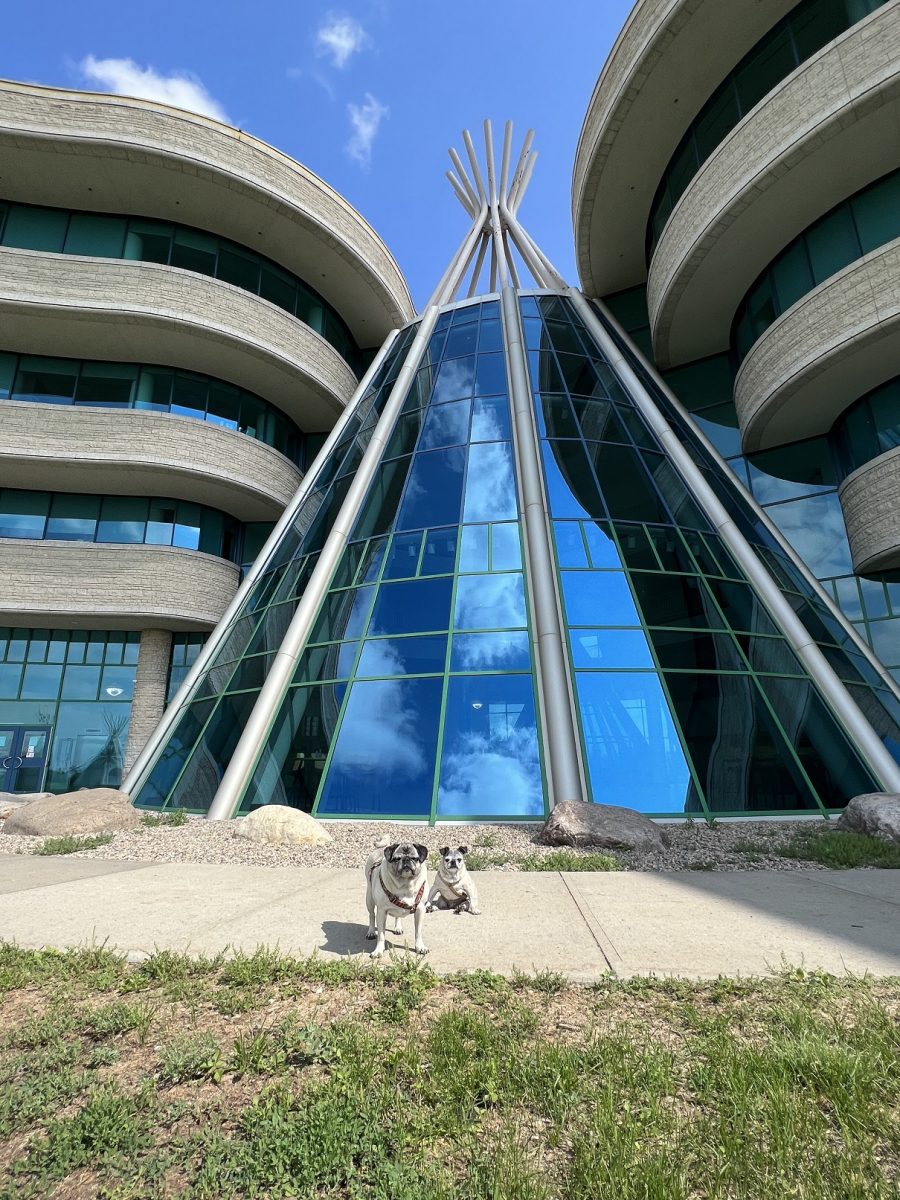
Nearly every wall in this building is curved – including the stairwells. The only flat wall is that of the elevator. Curved walls mirror nature.
The entire building is covered in Tyndall stone from Flin Flon, Manitoba. This stone is 190 million years old, and, if you look closely, you can find fossils in it.
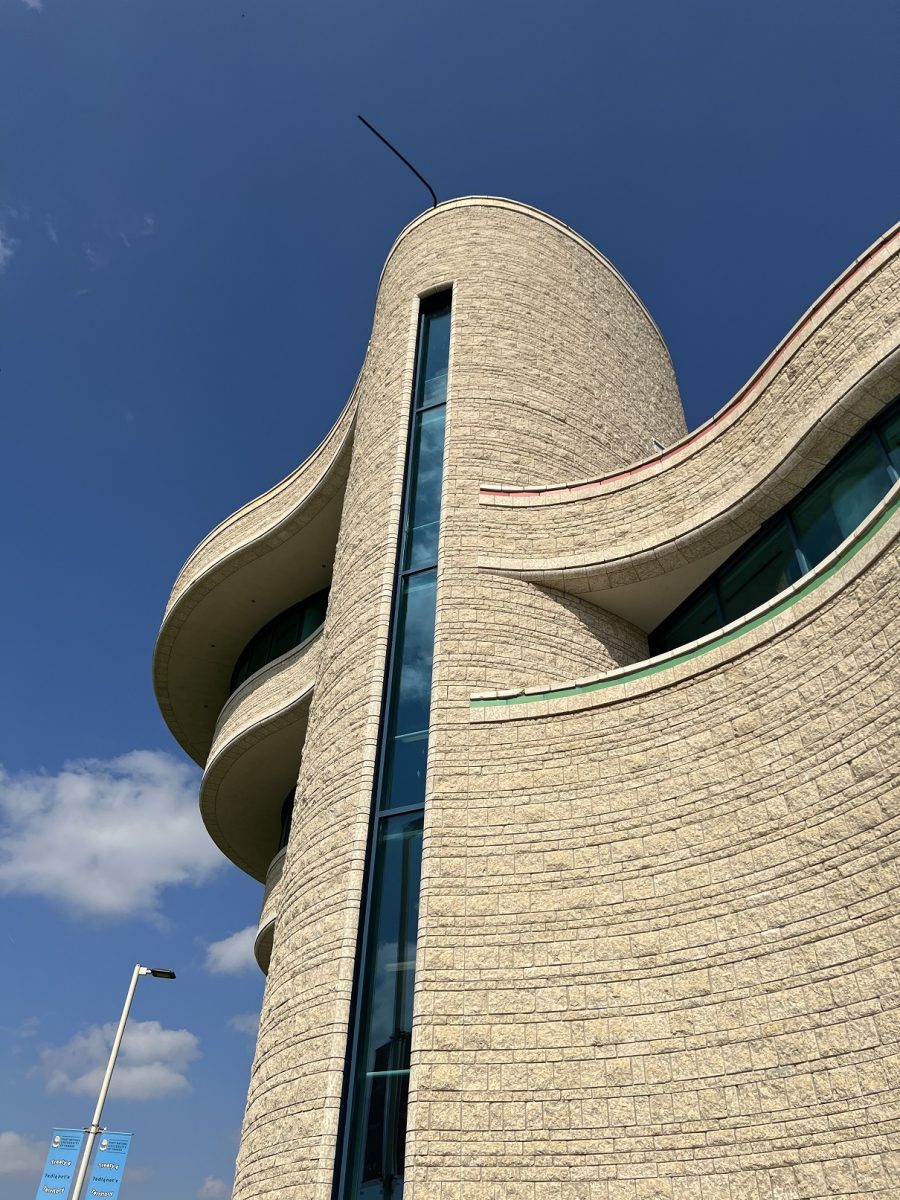
Chosen by Elders, the colour scheme represents our spirituality. You can see the pillars in the video below.
Green – Mother Earth and natural plants
Red – Animals and living beings
Yellow – The Creator and Sun
Blue – The sky
“Now, as you make your way around the Atrium in a clockwise direction, you will see that the circle is very symbolic to First Nations cultures. It represents continuation, as a circle has no end. The sun rises from the East and sets in the West, the seasons turn from spring to summer, fall and winter. Even life cycles change from newborn to youth, to adult, and then to Elder. First Nations Way, the access road around campus, is a circle, too.”
The Ceremonial Tipi. The centrepiece of learning at FNUniv is our Ceremonial Tipi. Elders are an important part of campus life, and they lead ceremonies and give cultural teachings in the Ceremonial Tipi. These ways of knowing are essential to protecting and revitalizing First Nations traditions and identities.
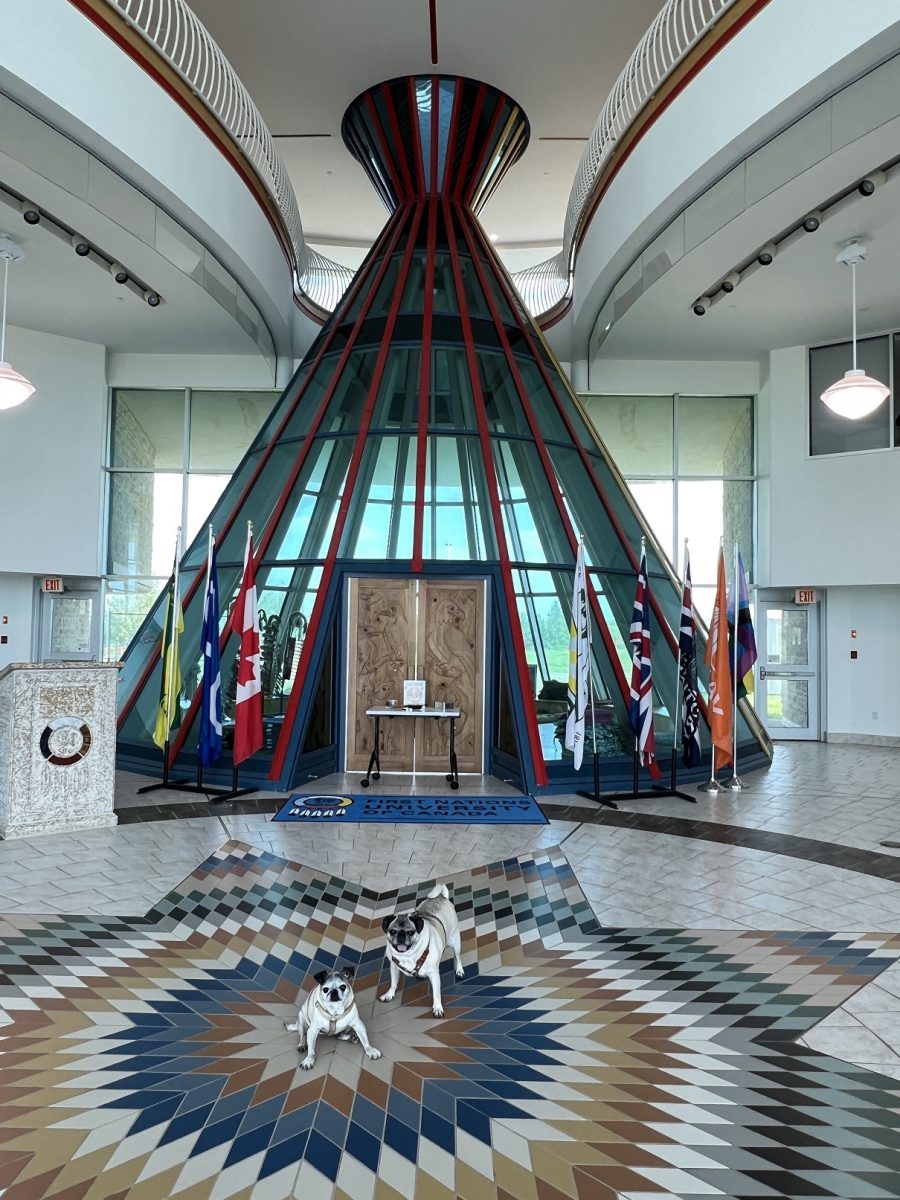
Eagle staffs are a form of sacred flag—Eagle feathers symbolize knowledge and honour. The more Eagle feathers, the more powerful the staff.
The doors of the tipi are carved from a 2000-year old Sequoia tree from California, which died over 200 years ago. It was carved by one of our Fine Arts graduates, the late John Henry Fineday from the Sweetgrass First Nation. The carvings tell the story of creation. There was a table in front with artifacts. I didn’t’ want to move it so only took a photo of the top half of the doors.
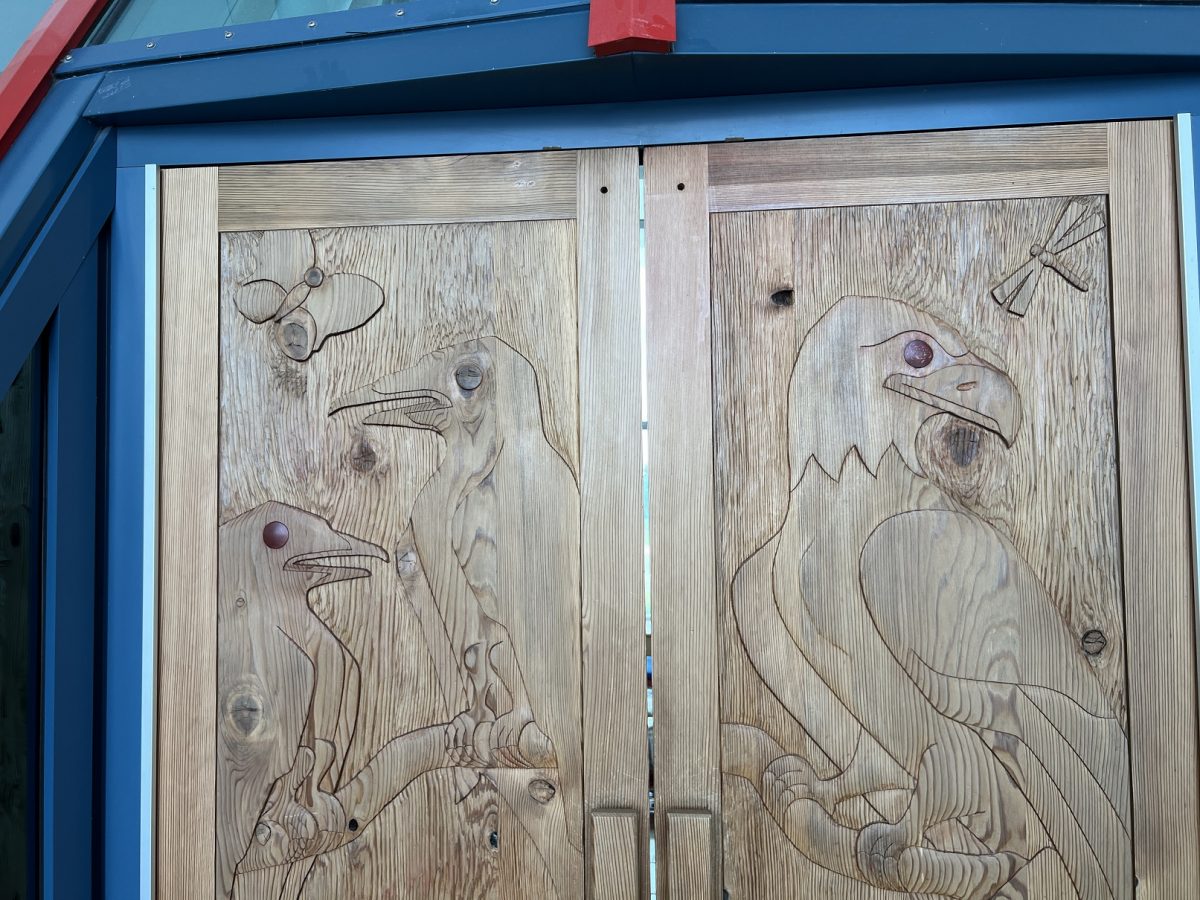
I had to cut the video short because Eve started barking at something. It echoed through the halls so we left quickly.
Hotel. Double Tree Hilton. I got there early to get a parking spot. There are limited spaces outside the lobby doors. Otherwise people have to drive around the back and go into a parkade. She said my room wasn’t ready – it was a 2 queen bed room when I booked. However, if I upgraded to a king size for $10 I could check in right away. Bonus. I did, had a long shower, then headed out.
Downtown Cultural Trailway The tourism office offered this walking tour along with a description of the buildings.
We were going to take the tour. As we were crossing the road from the hotel, the roads were blocked off. I asked someone what was going on and she said it was Pride Parade. I decided to shorten the cultural tour and watch the parade. After the parade we went to a few of the sites in the area.
Assiniboia Club. 1924 Victoria Ave. Founded in 1882, one of the first private clubs in Northwest America. This building was its third home and completed in 1912. It cost $59,000 to construct, which is about $1.3 million today.
Who did the better pose?
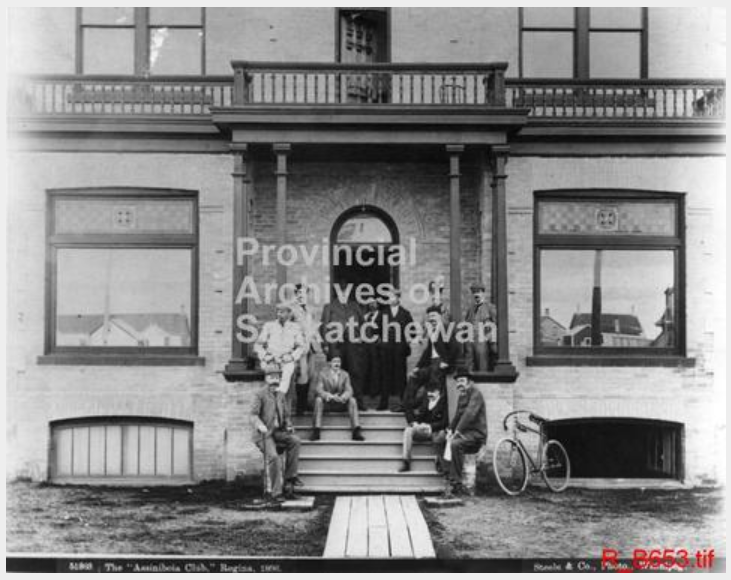
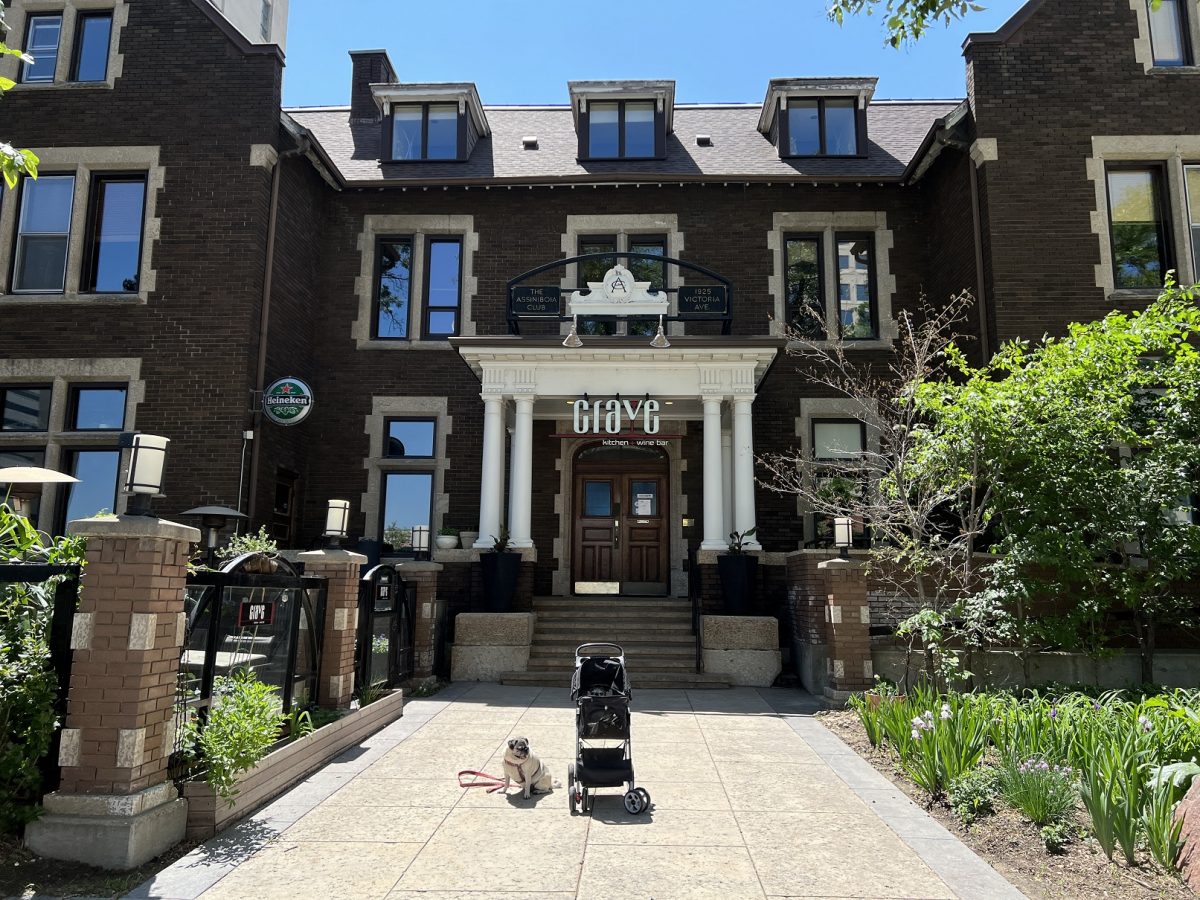
Back in it’s 1900s glory, club rules said women were not allowed inside the building, although members were known to have often snuck prostitutes into the upper floor bedrooms to supplement their carousing. According to local whispers, one of these women was rumoured to have been murdered with an axe in a private room on the third floor, at the behest of one of her clients.
Her spirit is said to still wander the halls of the former social club, appearing in windows and making terrifying noises. Some say they have seen the figure of a beautiful woman beckoning to them, only to disappear when they get close. Others have witnessed disembodied voices, flickering lights and items moving on their own.
The Hotel Saskatchewan -2125 Victoria Ave. Built by the Canadian Pacific Railway it was completed in 1927. The largest, most luxurious in the province and tallest building in Regina. Designed by the Montreal architectural firm, Ross & MacDonald. Completed in only 11 months with over 1,000 workers around the clock.
Designed in an H-shape so all rooms had access to fresh air and light. The first 3 stories project on to the street. It features tall, round headed windows. At the top is a Georgian style balustrade with mounted urns.
The hotel rooms had something special – individual shower and baths. It had its own water pump and well, refrigeration, power supply and workshops for upholsterers and carpenters.
The hotel has played host to King George VI and Queen Elizabeth II and King Charles. It caught fire in 1982 and fell into disrepair. The Radisson chain bought it in 1992 and restored it. The renovation revealed original chandeliers that had been hidden in the ceiling. Plaster mouldings found were used to recreate the original look. It was sold again in 2014 where it went an six million dollar renovation.
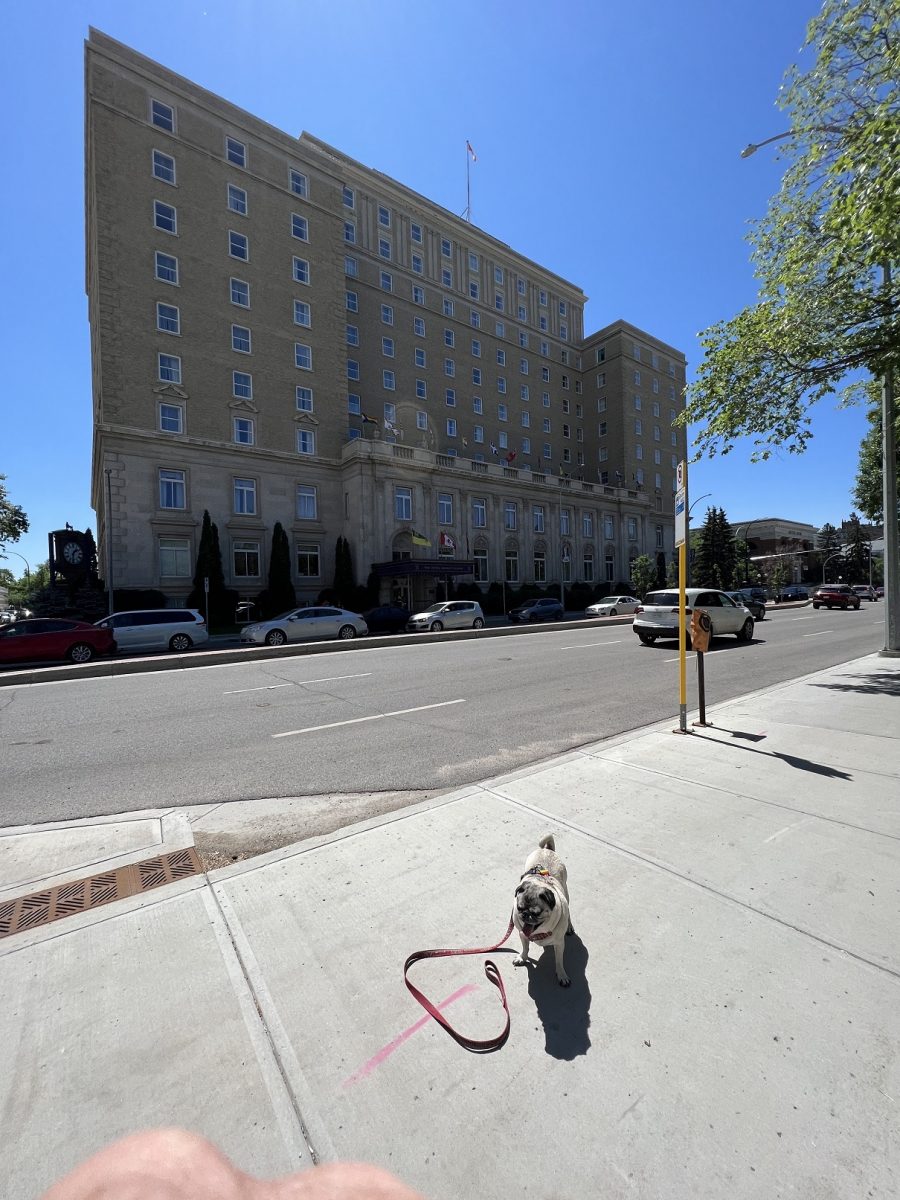
Victoria Park has stood at the centre of Regina for over 130 years. Originally called Victoria Square, it was a 2 block section of prairie grass set aside by the city. The area was ploughed to prevent a grass fire.
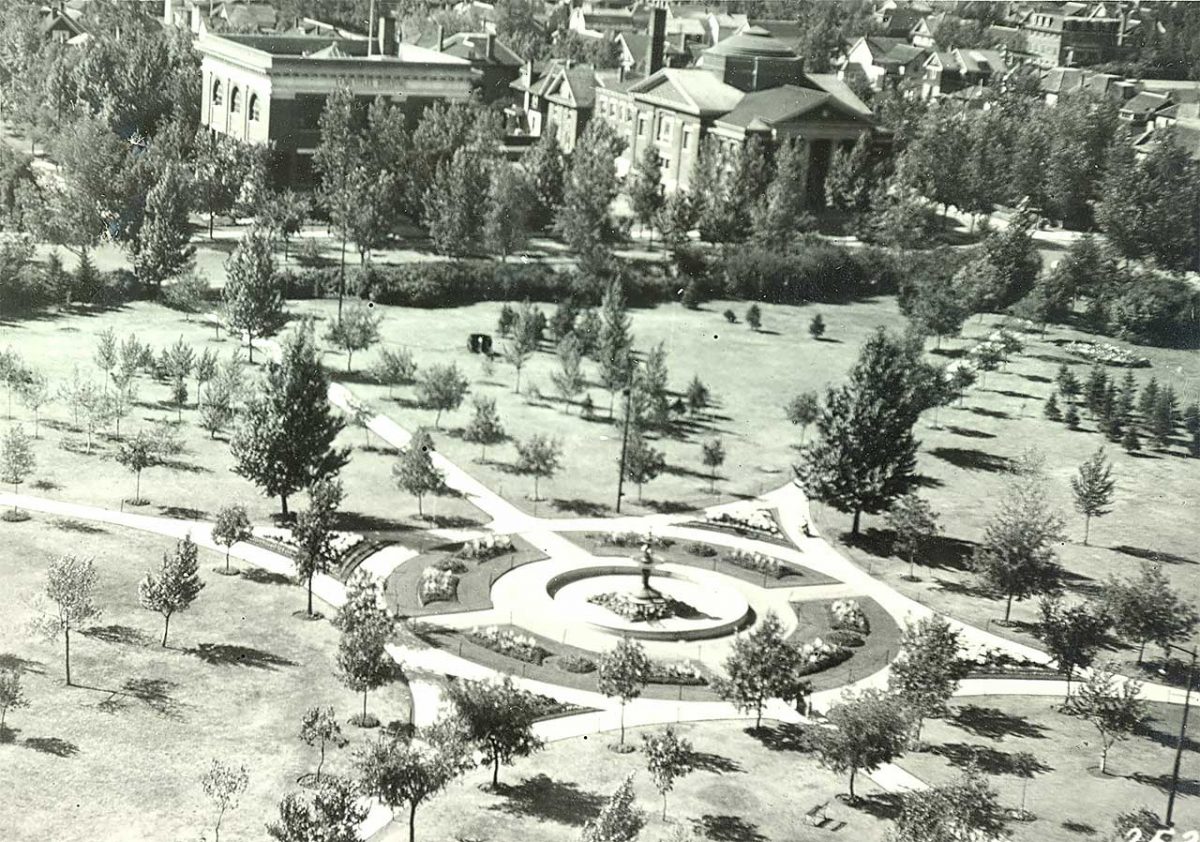
In 1901 Montreal-based landscape architect Frederick Todd was hired to design the new park. In its early days, local farmers brought produce and sold it in a market located in Victoria Park. In 1895, the park was the site of Regina’s first Territorial Exhibition and Fair, which later moved to its present location due to size.
The park was filled with grass, flowers and shrubs in 1905. It was also in 1905 that Victoria Park filled with thousands of people for Saskatchewan’s inauguration as a province. On September 4 of that year, hundreds of school children led a parade to Victoria Park to celebrate the occasion. That afternoon, Governor General Earl Grey and Prime Minister Wilfrid Laurier addressed thousands of people that had gathered for the declaration of Saskatchewan as a province.
In 1908, a fountain donated by Nicholas Flood Davin was placed in the middle of the park, where it remained until it was moved to Rotary Park in 1925. In 1926, on Armistice Day, a cenotaph was erected to honour those in World War 1. It has since been rededicated for those in World War II and Korea
The main entrance leads to a plaza which features statues and memorials. There was a statue of Sir John A. Macdonald that featured prominently in the plaza. Erected in 1967, it was designed by Sonia de Grandmaison and cast by John Cullen Nugent. It was removed in 2021 and placed in storage.
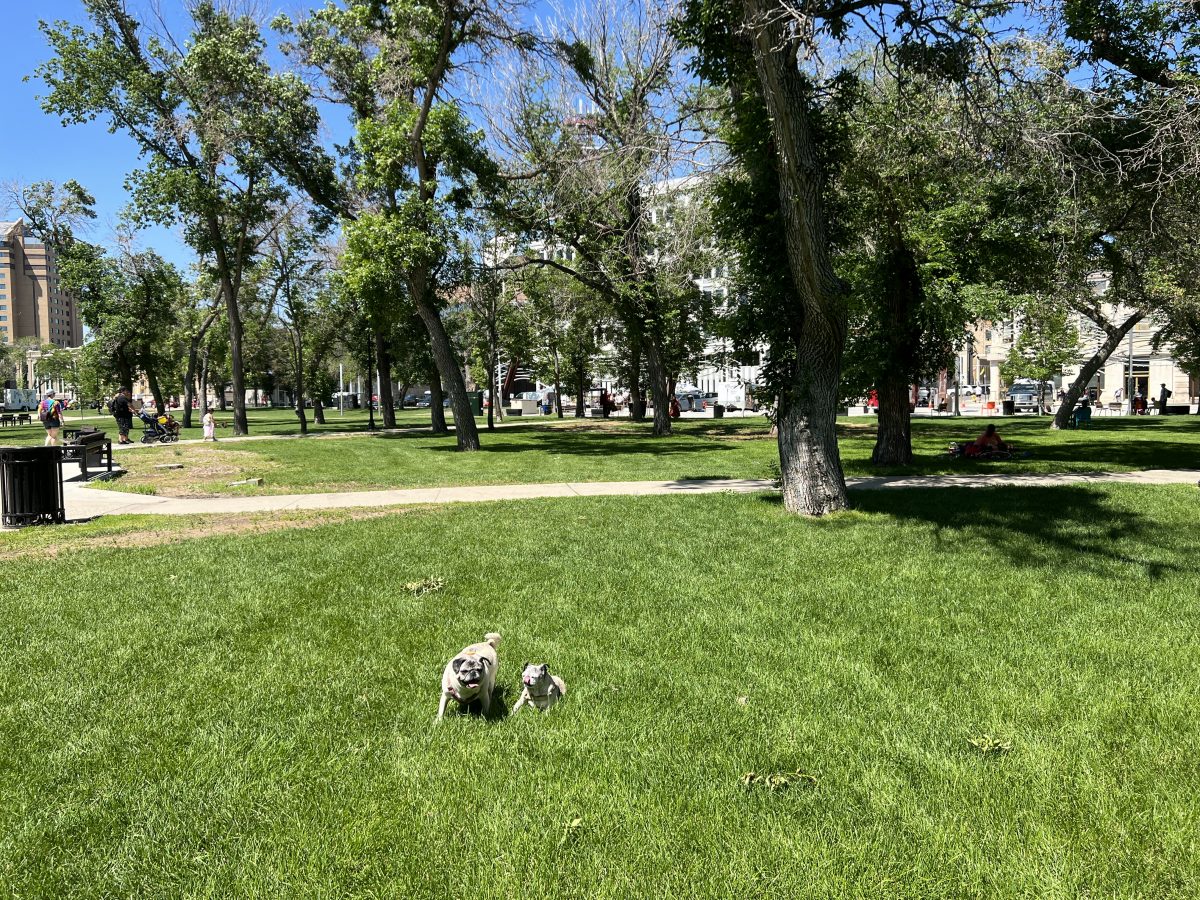
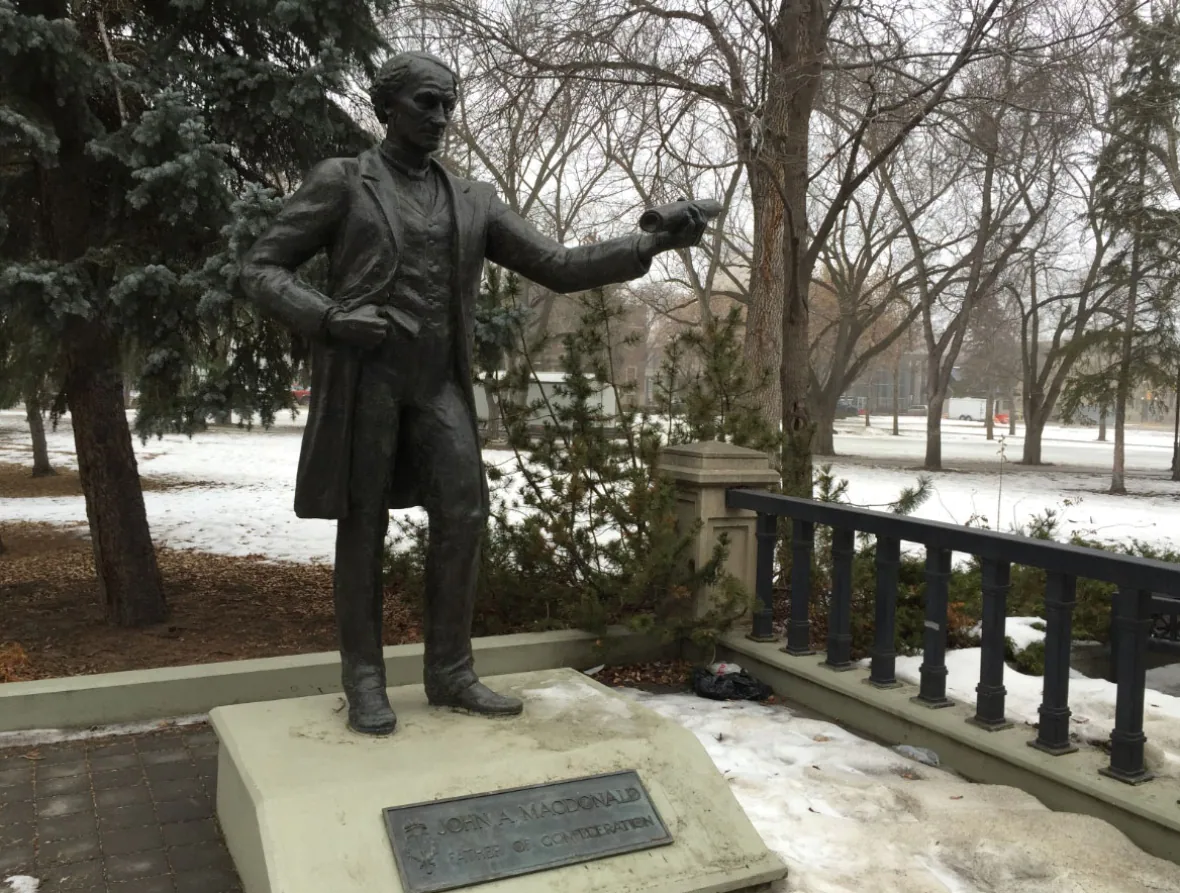
The Federal Building. (Government of Canada building). 1975 Scarth St. The building sites on the site of a Northwest Territories courthouse. It was in that courthouse that Louis Riel was tried and sentenced to death in 1885. The building was burned down by an arsonist in 1895. The current building was done as part of a federal make work program during the Great Depression. It cost $400,000 or 8 million in today’s dollars. It was designed with a mix of Art Deco and streamlined modern style.
The interior is decorated with terrazzo floors, bronze elevator doors, carved fluted columns and marble detailing. It was completed in 1937 and occupied by the Customs department. Loads of confiscated, illegal liquor was stored in the building. One of the spots where people lined up for the parade.
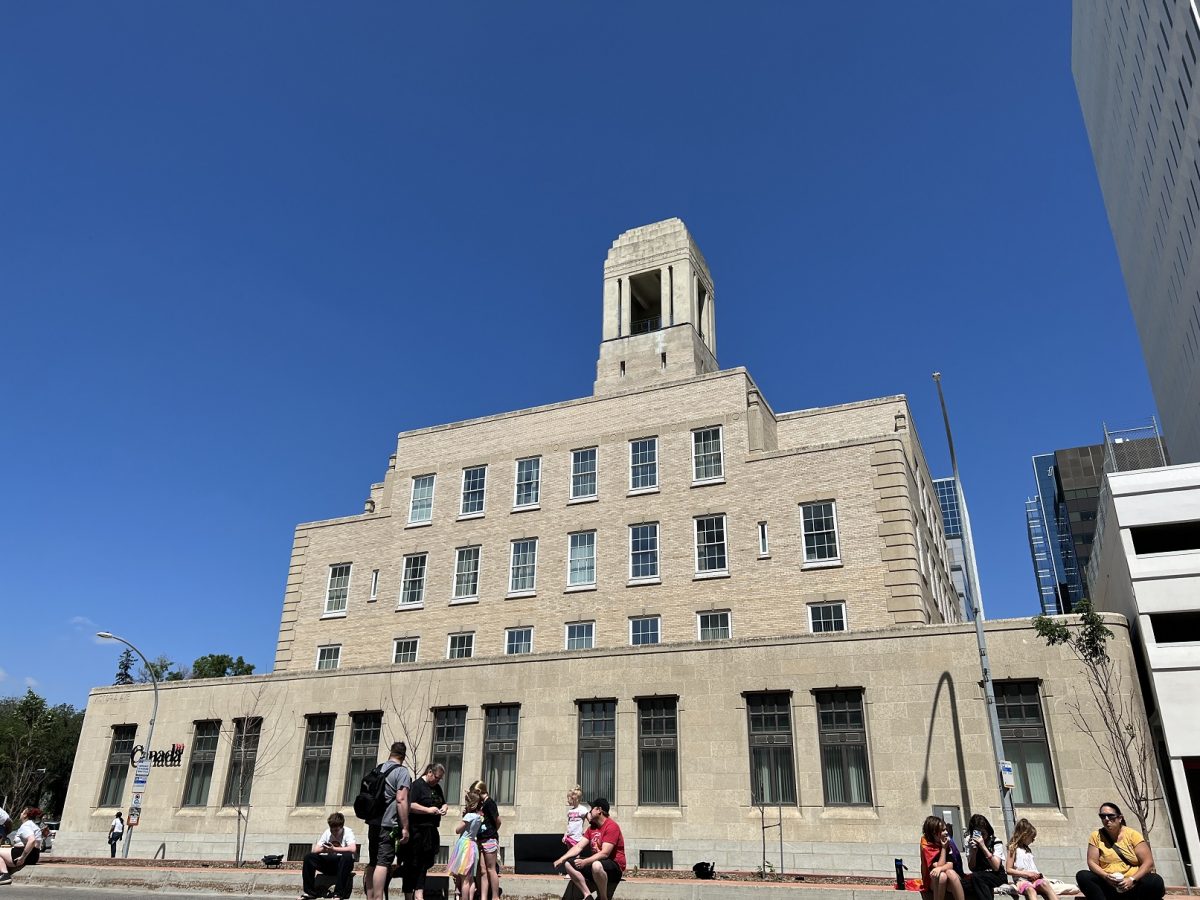
It was a wonderful parade with families, dogs and various companies and services taking part. When they had the first parade, they had to do it on the sidewalk because the city would not grant a permit for a road parade. Quite a few people reacted with joy when they saw Eve and Greta. I had Greta on my lap waving her paw as they went by.
Here are a few video clips of the parade
Union Station. ( 10 min) Completed in 1911, it was named when the Canadian National and the CPR combined passenger facilities into one station. In addition to the rail service, it housed the divisional headquarters of the CPR. To accommodate growing use, a major east-west expansion happened in 1931. The expansion cost the equivalent of 19 million dollars today.
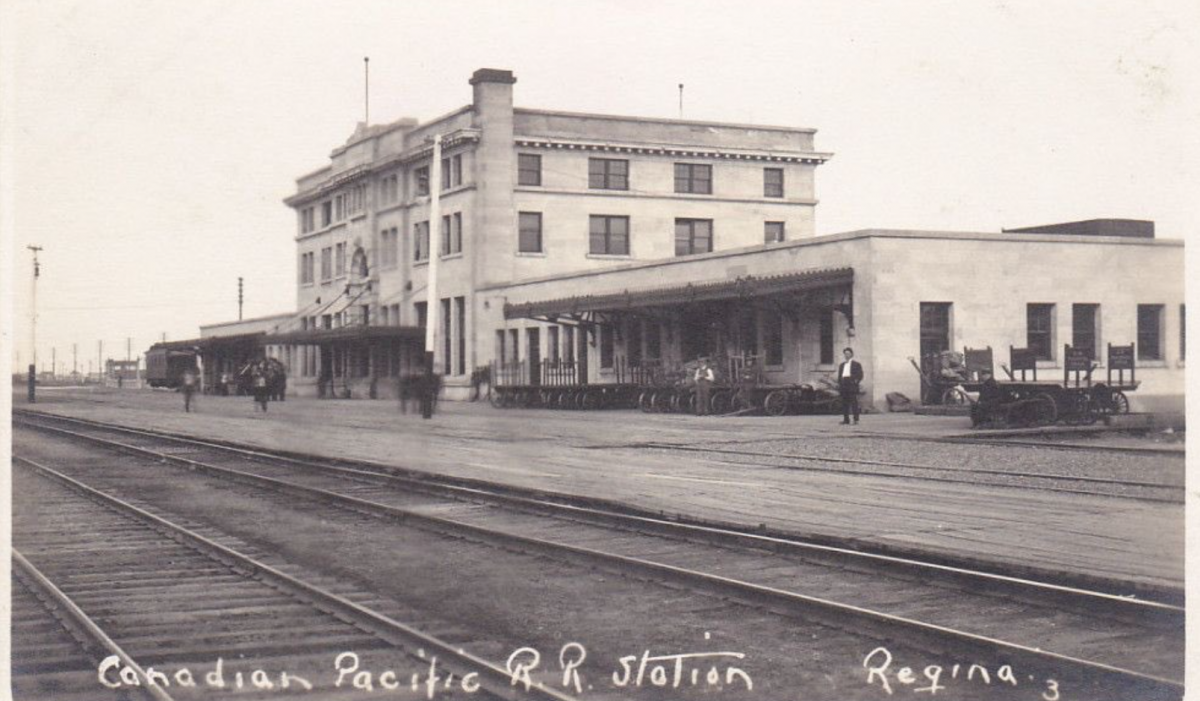
As Regina was a major junction on the CPR mainline, Union Station was designed to exude the importance and modernity of the railway. CPR’s practice had been to build a new station on another site and demolish the current one. Thankfully, that was not done in this case.
The expansion also included a new, front facing concourse done in the Beaux Art style – symmetrical design, arched windows and flat roof. The interior concourse included Art Deco detailing. Tyndall stone was used throughout, along with carvings of prairie animals and wheat sheafs.
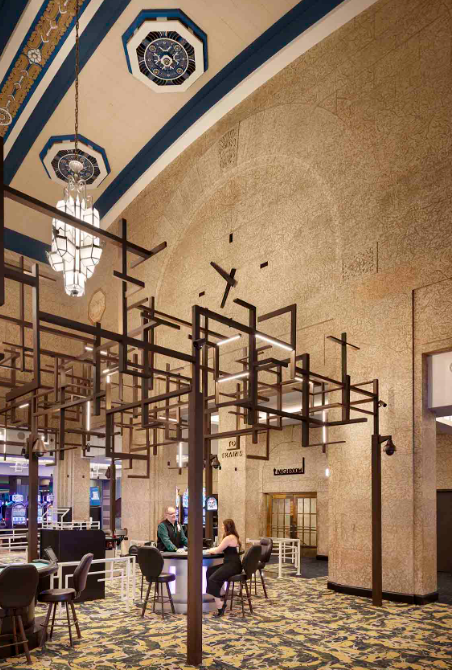
“A passenger arriving on a train would have been confronted by a Neo-Classical façade clad in cut stone that emphasized the station’s key place in the rail-system. This façade is characterized by high stone relief and includes a Roman arch surmounting the original entranceway. The elegance of the exterior is continued in the grand hall dominated by a vaulted ceiling and three large art deco chandeliers framed by detailed plasterwork. These decorative elements complement several functional elements, such as the ticket counters. During the 1931 expansion, terrazzo floors, marble support columns and plaster molded ceilings heightened the grandeur of the interior.”
The last train left the station in 1990. In 1996 it reopened as a casino, preserving this preeminent monument to Saskatchewan’s history.
In 1996, the area surrounding the park was declared a Heritage Conservation District to protect the protect the historical and architectural gems. The building was preserved when it became Casino Regina
Union Station Restaurant. It is located in the casino. I decided I would have a look at the building and have dinner there. No, I did not stop for any slot machines.
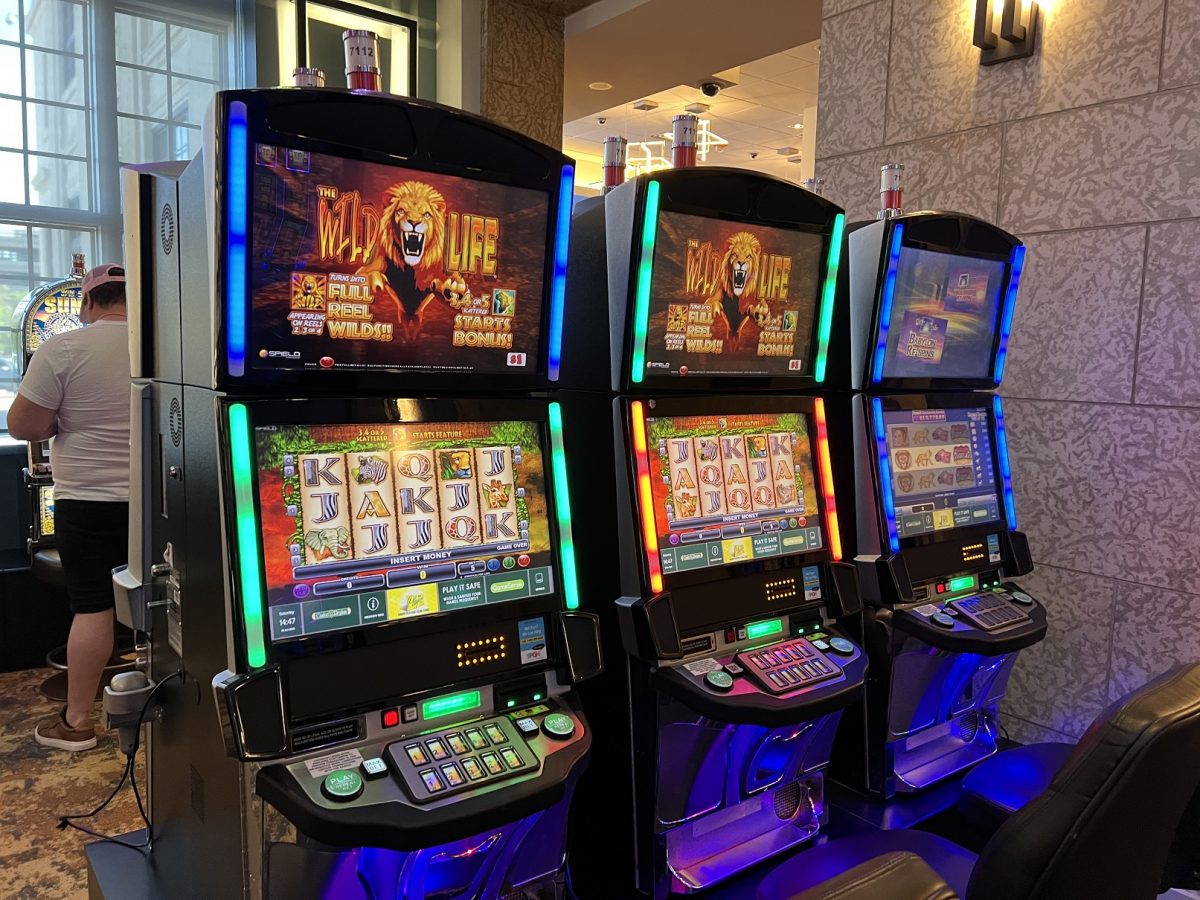
Caesar Salad and Chicken Parmigiana along with a glass of Jackson-Triggs Merlot The waitress was excellent. The place was empty at 5 pm but the casino was doing a good business.
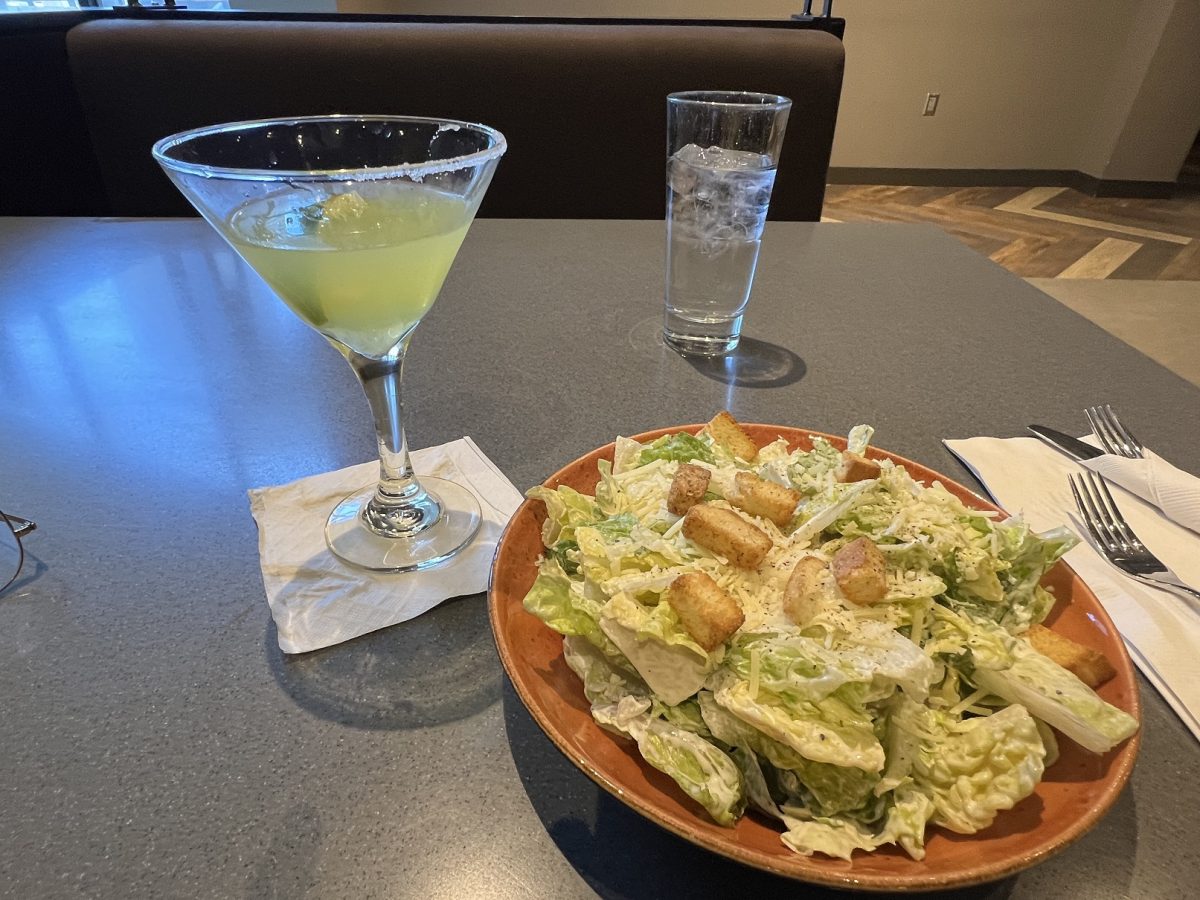
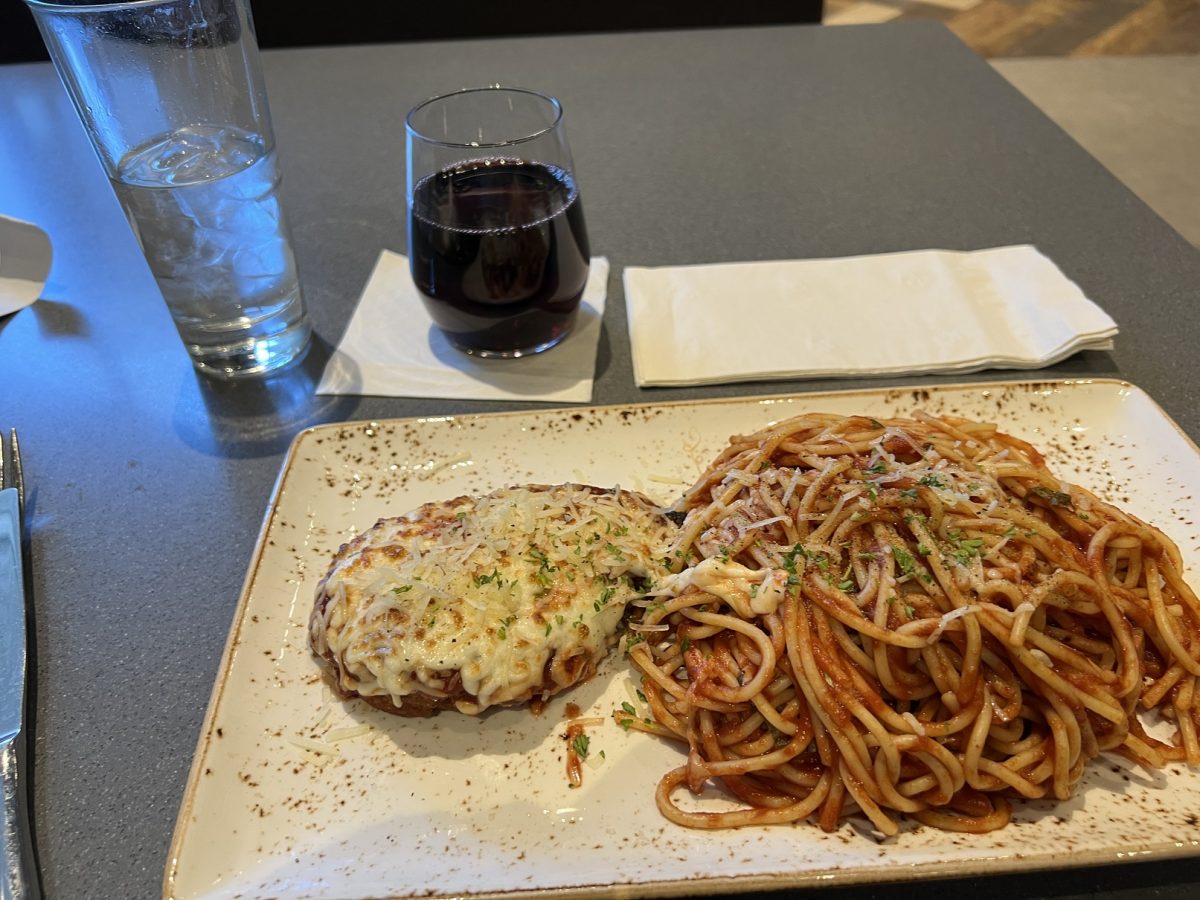
Walking back from the casino, I spotted some wall art. It reflects the Thai restaurant that looked like it was permanently closed. But Art lives on.
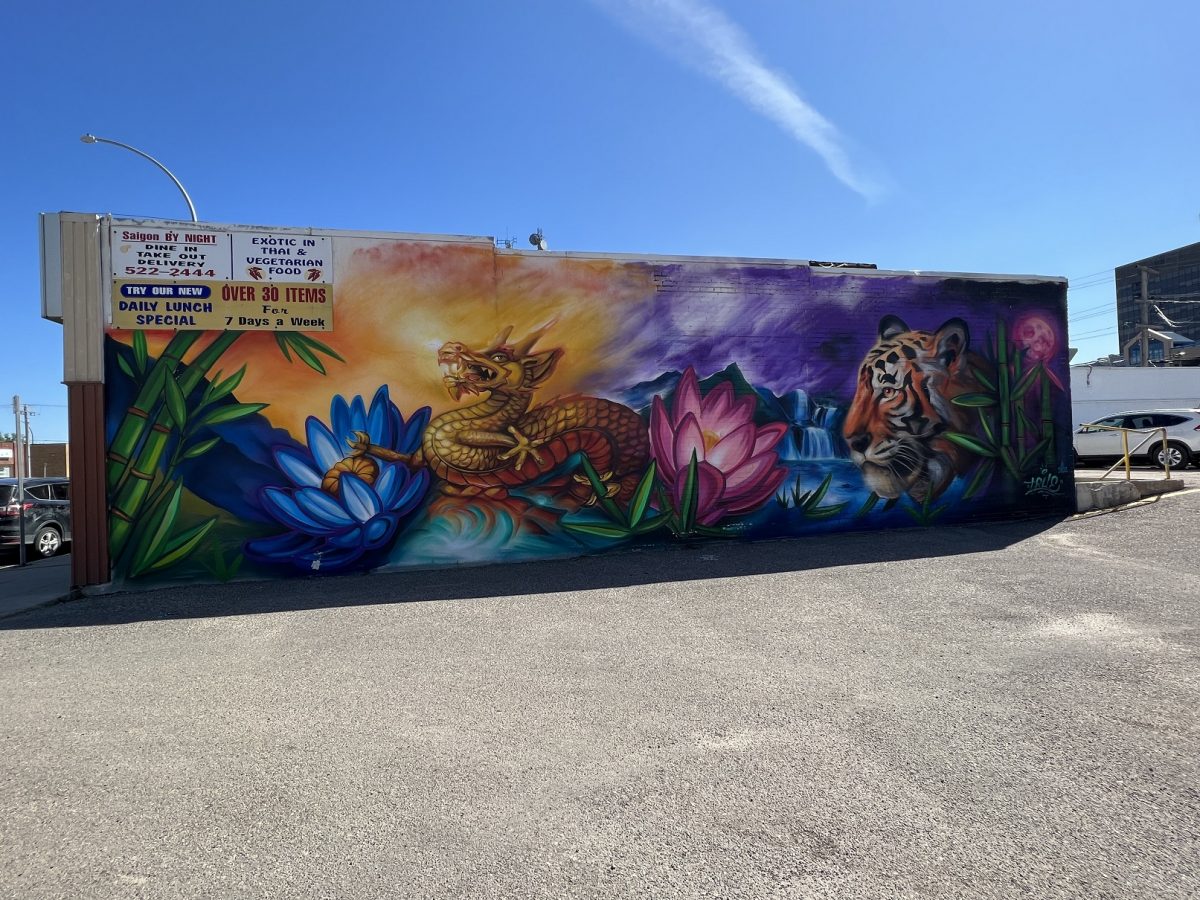
SweetNSticky Drag Show. To celebrate Pride week in Regina, I’m at the Exchange venue for a drag show event. It features Kendall Gender, finalist in the Canada’s Drag Race show. The Exchange is a performance space in the Warehouse District. They have poetry readings, book launches, film screenings and music. The proudly advertise this as a safe space for all.

The doors opened at 8 and I was still sore from the long hike. So I got there early to get a good seat. They were not letting people in but they did have a lounge area where I could sit and wait.
The show was supposed to start at 9, but from watching them setup in the lounge, they were behind schedule. At 9 I went to the ticket taker even though they were not letting people in yet. She scanned my ticket and allowed for early entry. Nice person.
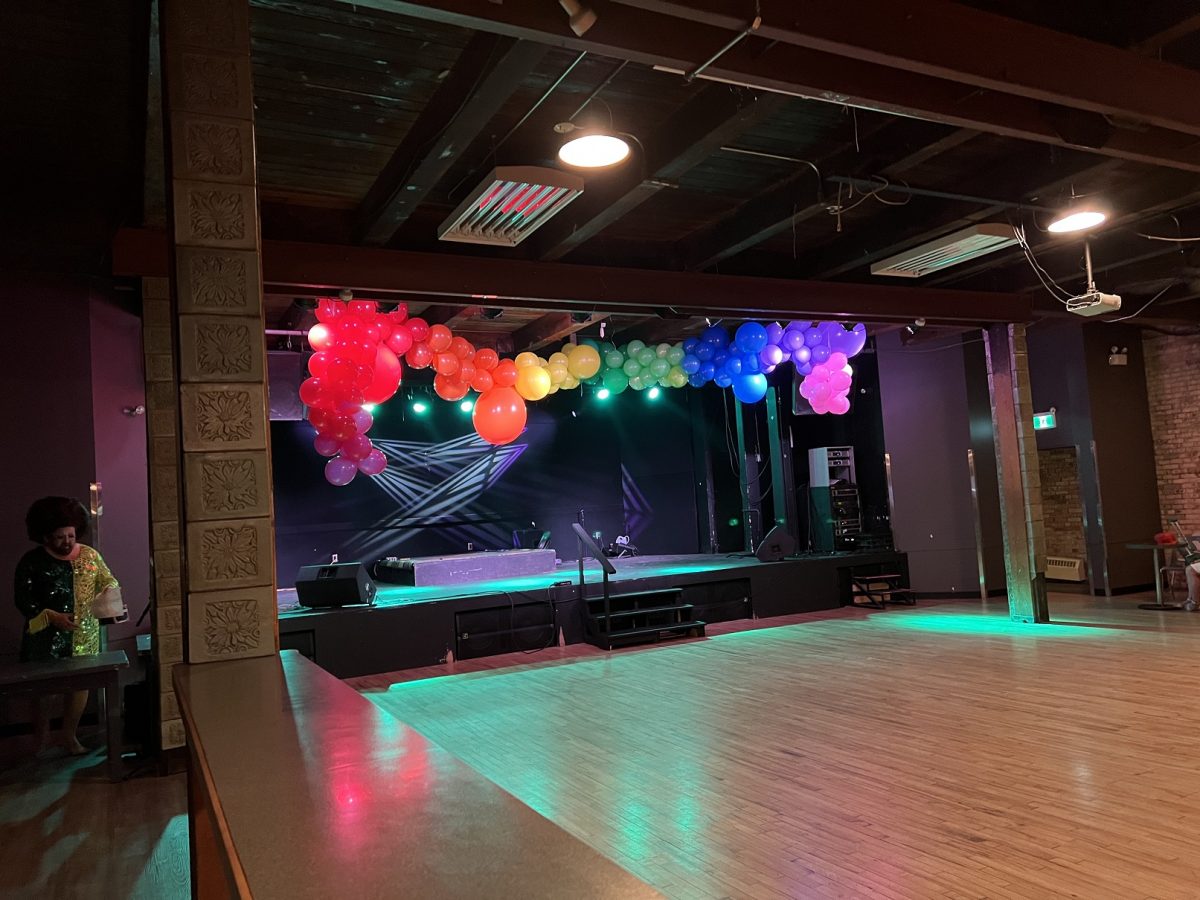
I waited until 10:30 and still no one was on the stage. I had an early morning and a long drive. My plan was to just watch the first set but I left at 10:30. I’m not as young as all the party goers that were they. It was a exciting, danceable crowd so I’m sure they had a good time.
The pugs were sleepy eyed when I got in. Got everyone into the king size bed and they quickly went back to sleep.
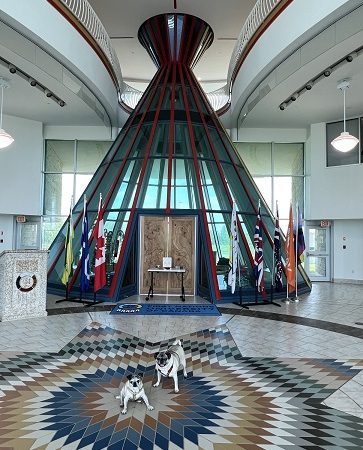
Loved this blog especially the parade!! The girls were a big hit with the people in the parade.